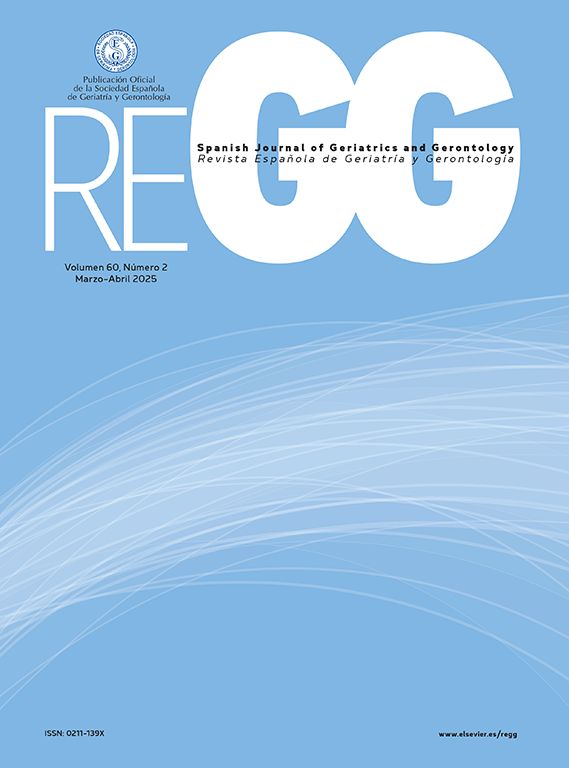Analizar la epidemiología y el espectro clínico, así como identificar factores pronósticos de la bacteriemia neumocócica en el paciente anciano.
Pacientes Y MétodoDe forma prospectiva, se seleccionó a pacientes ancianos diagnosticados de bacteriemia neumocócica en dos hospitales de la provincia de Málaga durante el período 1995-2001 y se compararon con un grupo control de pacientes de menos de 65 años diagnosticados consecutivamente de bacteriemia neumocócica. Para identificar factores pronósticos se realizó un análisis multivariante por regresión logística.
ResultadosSe seleccionaron 72 casos de bacteriemia neumocócica en ancianos, con una edad media (desviación estándar) de 73,4 (6,9) años, el 61,1% varones. La incidencia anual media de bacteriemia neumocócica en los ancianos fue de 15,1 casos/ 100.000 habitantes. Ningún paciente había recibido previamente vacunación neumocócica. Los factores predisponentes más frecuentes fueron: enfermedad pulmonar obstructiva crónica (40,3%) y diabetes mellitus (25%). El origen pulmonar fue la fuente de infección más frecuente en los ancianos (el 81,9% frente al 65,3%; p < 0,05; odds ratio [OR]: 2,5; intervalo de confianza [IC]: 1,1-5,6). En el 13,9% de los casos no se pudo determinar la fuente de infección. La tasa de resistencia a penicilina fue del 23,6%. La mortalidad fue superior entre los ancianos (el 34,7 frente al 18,1%; p < 0,05; OR: 2,4; IC: 1,1-5,7%). Los factores pronósticos asociados con mortalidad de forma independiente en la bacteriemia neumocócica del anciano fueron hipoalbuminemia, presencia de infiltrados pulmonares multilobares y confusión, lo que generó un modelo con una especificidad del 97,9% y un valor predictivo positivo del 88,9%.
ConclusionesLa bacteriemia neumocócica en el anciano es una entidad frecuente, cuyo origen más común es el pulmonar, y se asocia con una alta mortalidad. Se describe un modelo pronóstico con alto poder predictivo.
To analyze the epidemiology and the clinical spectrum as well as to identify prognostic factors for pneumococcal bacteriemia (PB) in the elderly.
Patient and MethodElderly patients diagnosed of PB in two hospitals in Malaga (Spain) were selected prospectively between 1995 and 2001. They were compared with a control group of younger in-patients diagnosed consecutively of PB. Multivariate analysis by logistic regression was carried out to identify prognostic factors.
ResultsSeventy-two cases of PB in elderly patients were included. Mean age was 73.4; standar desviation, 6.9 years, 61.1% occurring in males. The overall annual incidence of PB in the elderly was 15.1 cases/100,000 population. None of the patients had received pneumococcal vaccine previously. The most common underlying diseases were chronic obstructive pulmonary disease (40.3%) and diabetes mellitus (25%). The lungs were the most frequent source of infection in the elderly (81.9% to 65.3%; p < 0.05; OR: 2.5; CI:1.1-5.6). No source of bacteriemia could be identified in 10 (13.9%) cases. Resistance rate to penicillin was 23.6%. Mortality in elderly patients was higher than in younger patients (34.7% to 18.1%; p < 0.05; OR: 2.4; CI:1.1-5.7). In the multivariate analysis, the independent prognostic factors for mortality were hypoalbuminaemia, multi-lobe involvement and presence of confusion. A predictive model was generated with 97.9% specificity and 88.9% positive predictive value.
ConclusionsThere is a high incidence of PB in elderly patients. The lung is the most common source of bacteriemia. These patients have a higher mortality rate than younger patients. A prognostic model is described with high predictive power.






